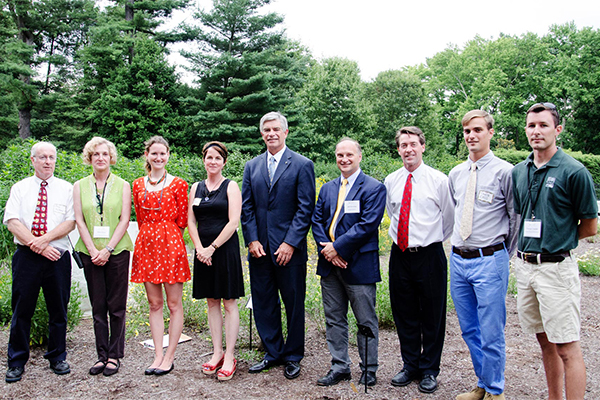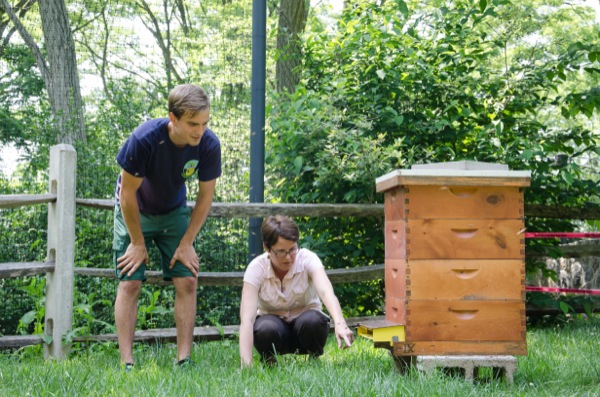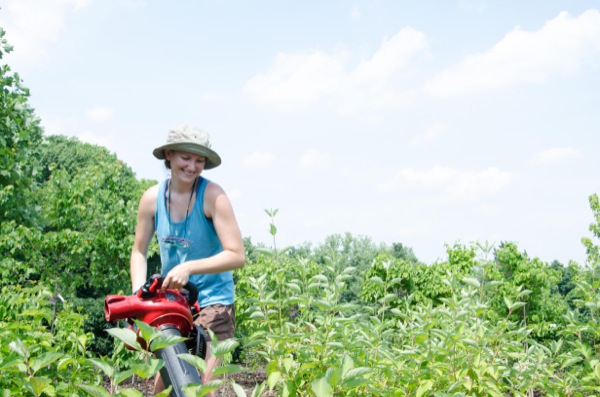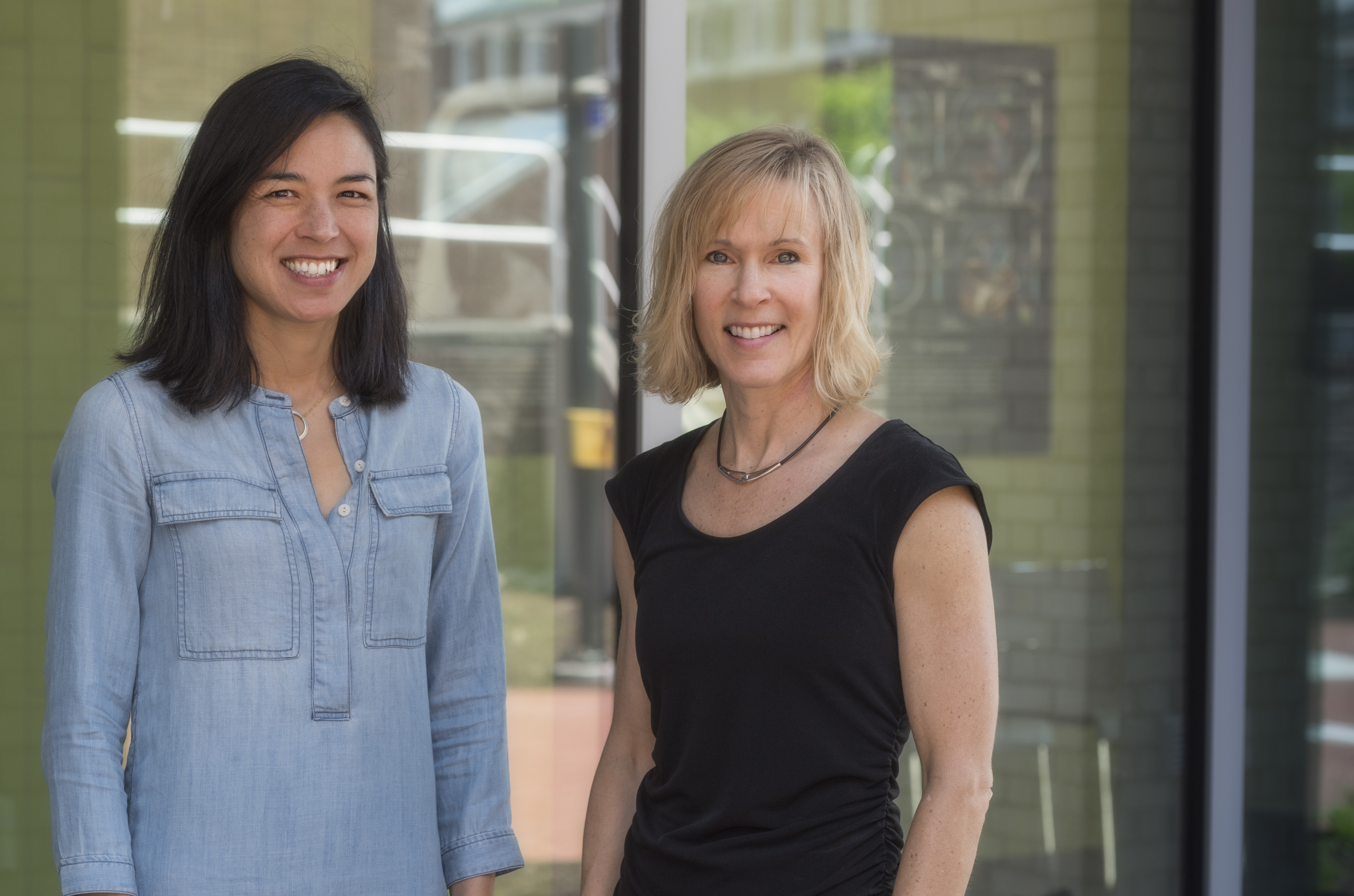


Native plant partnership
UD, Mt. Cuba Center research how native plants contribute to healthy ecosystems
5:49 p.m., July 7, 2014--The University of Delaware and Mt. Cuba Center have entered into a new research collaboration to assess the ecological value of native plants, and determine if insects are more attracted to ‘store bought’ native plants or plants that grow in the wild.
The project involves two separate studies led by UD’s Doug Tallamy and Deborah Delaney who seek to add ecological value to the list of attributes gardeners should consider when making choices for their gardens and landscapes.
Research Stories
Chronic wounds
Prof. Heck's legacy
Tallamy, professor in the Department of Entomology and Wildlife Ecology (ENWC), and Delaney, assistant professor in the department, are both assisted in their research by Mt. Cuba Center Fellows Emily Baisden and Owen Cass, who are graduate students in UD’s entomology and wildlife ecology program.
The research projects will last for two years and are taking place at two trial gardens at Mt. Cuba Center, located on Barley Mill Road near Hockessin, Delaware, at apiaries at both Mt. Cuba Center and UD’s College of Agriculture and Natural Resources (CANR), and at laboratory space at CANR.
The partnership was formally announced on Wednesday, July 9, at Mt. Cuba Center's third annual Trial Garden Open House.
Jeff Downing, executive director of Mt. Cuba Center, explained that with Mt. Cuba Center seeking to get involved with more academic research involving horticultural plants with an ecological angle, the partnership with UD was a logical one.
“The University of Delaware is a natural partner for Mt. Cuba Center,” said Downing. “With Doug Tallamy and Deborah Delaney, we are studying that nebulous area where horticulture and ecology intersect. Mt. Cuba Center is interested in improving understanding of how native plants contribute to healthy ecosystems, and our Trial Garden and renowned native plant gardens are the perfect laboratory for this research. Being able to execute these interesting and relevant research projects and subsidize fellowships for the graduate students -- the next generation of researchers -- seemed like a double win.”
Downing said he believes the partnership is “a great way to be able to actualize our research objectives in a way that is economical but impactful and at the same time, we get some really good research out of it and subsidize the future of botanical, horticultural, ecological research.”
“The health of the earth’s inhabitants will ultimately be determined by how well we align the study of plants, animals, humans and ecosystems,” said Mark Rieger, dean and professor at UD’s College of Agriculture and Natural Resources. “Our partnership with the Mt. Cuba Center is critical to the University’s ability to explore this ‘One Health’ phenomenon further. We are particularly honored to collaborate with the center on this relevant research and look forward to our continued partnership.”
Cultivar research
To determine if cultivars of native plants -- plants that have been bred to have a certain trait such as color, shape or size -- support food webs as well as their parent species, Tallamy and Baisden are collecting insects from a garden at Mt. Cuba Center and raising them to see what types of species are feeding on the plants and if they are feeding on certain plants more than others.
Tallamy explained that cultivars often are selected because of how they look. “It’s all about aesthetics. So if you find a red maple in the fall that’s really red, you clone that genotype and call it October Glory red maple. Then you’ve got a cultivar,” he said. “So it’s a slice of the genome of that population. A lot of cultivars are just variants found in nature but a lot of them are actively selected by breeding programs. That’s what this garden is. All of these plants are genotypes of a single species and we are seeing which ones do best under different circumstances.”
A large part of the work involves rearing the insects, such as caterpillars, at labs at UD to determine their species in those cases in which the researchers cannot identify them in the field.
“We wouldn’t want to take anything we didn’t need to,” said Baisden.
Baisden’s work includes maintaining the garden and its 160 plants, weeding and watering them when necessary, and collecting insects from the garden with Tallamy three times during the summer.
Tallamy explained that when they collect insects, it’s a two-day event. One day they collect the caterpillars and the next they take leaf blowers converted to vacuum machines and collect the rest of the insects. He also noted that Baisden’s job of keeping the insects alive through winter is a big undertaking.
“Come August, the ones we collect are not going to come out as adults until next spring. We have to keep them alive all winter long, which is very hard. All of the insects we suck up with our machine, Emily has to identify,” said Tallamy.
Tallamy also noted that even though this study isn’t looking at every type of cultivar in the world — there are multiple thousands — they will be able to extrapolate the results to cover most types of cultivars.
“What we’re looking at is different types of genetic changes and then we can extrapolate because there’s no way we’re going to look at all tens of thousands of cultivars. Fortunately, there are only a few types of genetic changes that create a cultivar. We are looking for patterns that emerge from these few changes,” said Tallamy.
Ecological role of flowering plants
Delaney and Cass will look at how well various plants attract insects in order to determine which plants provide the most nutritional pollen and nectar for pollinators. The nutritional quality of pollen and nectar collected will also be analyzed to determine differences in nutritional value.
Delaney explained that they will look at cultivars within two Genera: Coreopsis and Monarda.
“We are really going to be assessing floral traits like color, nectar and pollen quantities, and the nutritional quality of nectar and pollen of the different cultivars to see if there’s any differences,” said Delaney. “Ultimately, we want to understand the ecological role that these different cultivars serve in a landscape so that people are not only making a choice on the beauty of a cultivar but of the actual practical purpose of that plant in the ecosystem or in their garden or lawn -- what the plant is going to attract and if it will be able to provide nutritious forage for whatever it attracts.”
In addition to collecting pollinators from the plants with a leaf vacuum, Cass explained that they will also be observing the pollinators and how they interact with the plants.
“We’ll be making observations of the pollinators by just sitting there with a checklist and noting them as they come. It will be done in a methodical way so we can show statistical significance between the cultivars for their attractiveness,” said Cass.
Cass also said that they have set up five beehives at Mt. Cuba Center, as well as hives at UD’s CANR facilities in Newark, and placed pollen traps on the hives.
Once a week, they turn the traps on for eight hours during the peak pollen collecting and foraging hours, and the pollen loads are knocked off the honey bees into traps where the pollen collects in discrete pellets.
“We take that pollen load to the lab and study the pellets under a microscope and identify them to the lowest taxonomic rank possible,” said Cass, who explained that they do this in order to track the bees’ foraging resources and preferences within 2-5 miles of their respective colony, which is their foraging distance. This will provide a temporal forage calendar for the honey bees at Mt. Cuba Center and on UD’s Newark farm.
“Week by week we can see how much they brought in and if they are feeding on only one plant or multiple plants, and which is the dominant plant that week,” said Cass.
With the hives at both Mt. Cuba Center and Newark, the researchers can see how this works in two completely different landscapes.
“We can see the different pollen that is brought in when it’s primarily forest cover, fragmented fields and more rural versus UD, which is more urban,” said Cass.
With this research, they are hoping to be able to inform local beekeepers of how colony growth and strength is linked to specific resources that are available to the local bees.
“A common question that beekeepers have is ‘What are my bee’s bringing in?’ This question came to my mind four years ago when I first started beekeeping and it’s a difficult question to answer. It takes a lot of leg work to collect them, identify them, and look through all the different resources,” said Cass.
Article by Adam Thomas
Photos by Danielle Quigley







.jpg)




